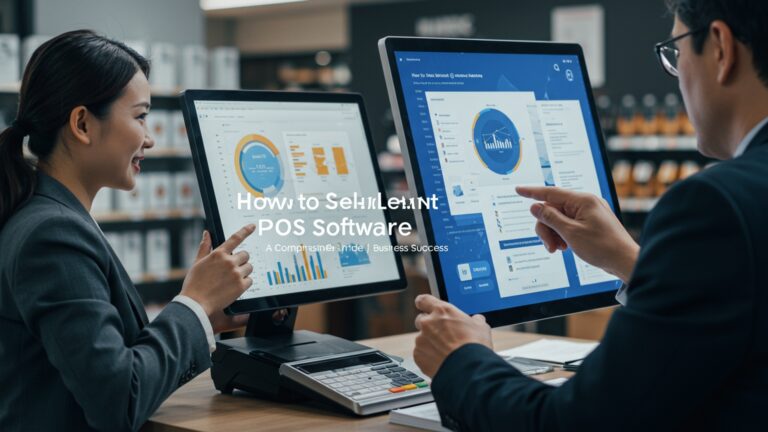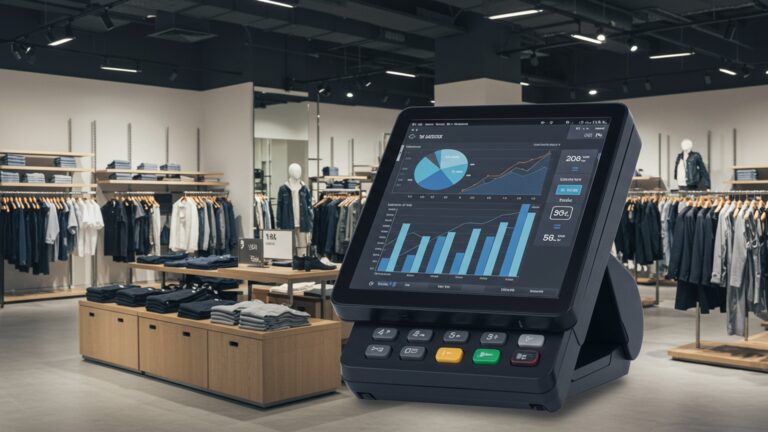7 Essential Features Your POS Billing Software Needs for GST Compliance
Navigating the complexities of Goods and Services Tax (GST) remains a critical challenge for businesses, especially as compliance requirements like e-invoicing for B2B transactions extend to an increasing number of entities. A robust pos billing software with gst integration is no longer a luxury but a fundamental necessity, streamlining operations and safeguarding against costly penalties. Businesses demand systems that not only process sales efficiently but also accurately classify items, calculate tax liabilities. generate compliant invoices for various GST slabs. Without a powerful, intelligent solution, reconciling daily transactions with fluctuating tax rules becomes a monumental task, diverting valuable resources and risking audit scrutiny in an era demanding real-time data accuracy and seamless digital reporting.
Understanding GST Compliance in Retail and Services
In India, the Goods and Services Tax (GST) regime has transformed the way businesses manage their taxation. For any enterprise, from a small retail outlet to a large service provider, ensuring GST compliance isn’t just a legal obligation; it’s a critical component of operational efficiency and financial health. Non-compliance can lead to hefty penalties, legal issues. a damaged business reputation. This is where robust pos billing software with GST capabilities becomes indispensable. It’s no longer enough for your Point-of-Sale (POS) system to just process transactions; it must be a proactive partner in your GST journey, automating complex calculations, generating accurate reports. streamlining your compliance efforts. Let’s delve into the seven non-negotiable features your POS billing software needs to master GST compliance.
1. Automated and Accurate GST Calculation
The cornerstone of GST compliance is precise tax calculation. The GST framework involves multiple tax slabs (0%, 5%, 12%, 18%, 28%), different tax types (CGST, SGST, IGST). sometimes a Cess, all dependent on the nature of the goods or services and the location of the transaction. Manually calculating these can be prone to errors, especially in a fast-paced retail environment.
-
- What it is
This feature ensures that your pos billing software with GST automatically applies the correct GST rates to each item in a transaction. It differentiates between intra-state (CGST + SGST) and inter-state (IGST) sales. applies the appropriate Cess where applicable, based on pre-configured product data.
-
- Why it’s essential for GST compliance
Automation minimizes human error, which is the leading cause of incorrect tax filings. Incorrect calculations can lead to underpayment (resulting in penalties) or overpayment (resulting in loss of revenue). A compliant system guarantees that the exact tax amount is collected from the customer and reported to the authorities.
-
- Real-world application
Imagine a multi-outlet electronics store. A customer buys a laptop (18% GST) and a mobile phone (12% GST) from different states. A smart POS system immediately identifies the HSN codes, applies the correct IGST for each item. presents a consolidated, accurate bill. Without this, billing staff would need to manually look up rates and calculate, slowing down queues and increasing error risk.
-
- Actionable Takeaway
When evaluating pos billing software with GST, test its ability to handle various tax scenarios, including mixed-rate baskets, discounts. returns, to ensure its calculation engine is robust.
2. Comprehensive HSN/SAC Code Management
The Harmonized System of Nomenclature (HSN) for goods and Services Accounting Code (SAC) for services are unique identification numbers crucial for GST classification. Every good or service traded in India must be categorized under a specific HSN or SAC code, which dictates its GST rate.
-
- What it is
This feature allows you to assign and manage HSN/SAC codes for all your products and services within the pos billing software with GST. It should support mapping these codes directly to your inventory items, ensuring that the correct code is automatically pulled into every invoice.
-
- Why it’s essential for GST compliance
Correct HSN/SAC codes are mandatory on GST invoices and are critical for accurate GST reporting (e. g. , GSTR-1). Misclassifying goods or services can lead to incorrect tax rates being applied, which in turn can lead to discrepancies during audits and potential penalties. It also helps in claiming Input Tax Credit correctly.
-
- Real-world application
A restaurant might sell food (5% GST without ITC on rent/utilities), packaged beverages (12% or 18% GST). provide catering services (18% GST). Each of these requires a distinct HSN/SAC code. A good POS system allows the restaurant owner to assign these codes to menu items, ensuring that when a bill is generated, the correct code and associated tax rate are applied automatically for each item.
-
- Actionable Takeaway
Ensure your chosen pos billing software with GST provides an intuitive interface for HSN/SAC mapping and allows for bulk updates, especially if you have a large product catalog. It should also support different HSN/SAC code lengths as required by GST regulations based on turnover.
3. GST-Compliant Invoice Generation and Management
An invoice isn’t just a receipt; it’s a legal document for GST purposes. Every GST-registered business must issue invoices that adhere to specific formats and contain mandatory data as prescribed by the GST law.
-
- What it is
This feature ensures that every invoice generated by your pos billing software with GST includes all statutory details. This typically covers your GSTIN, the customer’s GSTIN (if registered), invoice number, date, HSN/SAC codes, detailed item descriptions, quantity, value, applicable GST rates (CGST, SGST, IGST, Cess), total tax amount. the total invoice value. It also manages invoice series and prevents duplication.
-
- Why it’s essential for GST compliance
A non-compliant invoice can lead to the denial of Input Tax Credit (ITC) for your customers, creating issues for them and potentially for your business relationship. It’s also a primary document reviewed during GST audits. Proper invoice numbering and dating are crucial for maintaining an audit trail.
-
- Real-world application
A wholesaler selling to other businesses (B2B) needs to issue invoices that clearly show the buyer’s GSTIN and a detailed tax breakup. If the software automatically populates these fields and ensures the invoice format is correct, it saves significant time and prevents errors that could jeopardize the buyer’s ITC claim. For B2C transactions, while the customer’s GSTIN isn’t always needed, the tax breakup and HSN summary are still vital.
-
- Actionable Takeaway
Verify that the pos billing software with GST allows for customization of invoice templates while strictly adhering to mandatory GST fields. It should also have robust search and retrieval functions for past invoices.
4. Robust Input Tax Credit (ITC) Management
Input Tax Credit (ITC) is a cornerstone of the GST system, preventing the cascading effect of taxes. It allows businesses to claim credit for the GST paid on purchases of goods and services used in their business operations.
-
- What it is
An effective pos billing software with GST should track all your purchases, capture the GST paid on them. Reconcile it with your GSTR-2A/2B data. This feature helps you identify eligible ITC, manage reverse charge mechanisms. ensure you’re claiming the maximum possible credit, thereby reducing your overall tax liability.
-
- Why it’s essential for GST compliance
Incorrectly claimed ITC can lead to demands for repayment, interest. penalties. Conversely, not claiming eligible ITC means you’re paying more tax than necessary, directly impacting your profitability. Proper ITC management is vital for accurate GSTR-3B filings.
-
- Real-world application
A manufacturing unit purchases raw materials, machinery. various services (transport, accounting). The GST paid on these inputs can be claimed as ITC. A POS system that doubles as an inventory and purchase management tool can automatically log these purchases, categorize them. prepare a summary of eligible ITC. This drastically simplifies the reconciliation process against the government’s GST portal data (GSTR-2A/2B).
-
- Actionable Takeaway
Look for pos billing software with GST that offers detailed purchase entry modules, automatic ITC calculation. reconciliation tools against government portal data. Integration with accounting modules is a major plus.
5. Seamless GST Report Generation (GSTR-1, GSTR-3B)
GST compliance culminates in filing various returns, primarily GSTR-1 (details of outward supplies) and GSTR-3B (summary of outward supplies and input tax credit). Preparing these reports manually from daily sales data is a monumental and error-prone task.
-
- What it is
This feature enables your pos billing software with GST to automatically compile all transaction data into the formats required for GSTR-1 and GSTR-3B. It should generate JSON files that can be directly uploaded to the GST portal or provide clear, summary reports that make manual filing straightforward.
-
- Why it’s essential for GST compliance
Accurate and timely filing of GSTR-1 and GSTR-3B is non-negotiable. Delays or errors lead to penalties, interest. can impact your customers’ ability to claim ITC. A system that automates report generation ensures consistency, accuracy. saves countless hours.
-
- Real-world application
A busy grocery store processes hundreds of transactions daily. At the end of the month, the owner needs to file GSTR-1 and GSTR-3B. Instead of sifting through physical bills or complex spreadsheets, the POS software, with a few clicks, generates a comprehensive report categorized by HSN, GST rate, B2B/B2C sales. other required fields, ready for review and upload. This transforms a multi-day task into a few hours of verification.
-
- Actionable Takeaway
Prioritize pos billing software with GST that offers direct JSON export for GSTR-1 and GSTR-3B, or at least highly detailed, portal-friendly reports. Also, check for features that help identify discrepancies before filing.
6. E-invoicing and E-way Bill Integration
For many businesses in India, e-invoicing and e-way bills are mandatory components of GST compliance, adding layers of digital requirements to transactions and logistics.
-
- What it is
E-invoicing involves submitting B2B invoices to the Invoice Registration Portal (IRP) for validation before issuance. The IRP generates an Invoice Reference Number (IRN) and a QR code, which must be printed on the invoice. An e-way bill is required for the movement of goods exceeding a certain value, providing digital documentation for consignment. Integration means your pos billing software with GST can communicate directly with the IRP and E-way Bill portal (or through a GSP – GST Suvidha Provider) to generate IRNs and e-way bills automatically as transactions occur.
-
- Why it’s essential for GST compliance
Mandatory for businesses exceeding specific turnover thresholds, failure to comply with e-invoicing and e-way bill rules can lead to goods being detained, penalties. non-recognition of invoices. Seamless integration streamlines these processes, ensuring compliance without manual intervention.
-
- Real-world application
A distributor selling goods worth over INR 50,000 to another business needs both an e-invoice and an e-way bill. Instead of logging into separate government portals, the integrated POS system, upon invoice generation, automatically pushes the data to the IRP, fetches the IRN, updates the invoice. then generates the e-way bill, printing all required details directly on the delivery challan. This drastically reduces processing time and ensures legal transport of goods.
-
- Actionable Takeaway
If your business falls under the e-invoicing or e-way bill mandate (or is likely to in the future), ensure your pos billing software with GST offers robust and reliable integration with these government portals, either directly or through a certified GSP.
7. Comprehensive Data Security and Audit Trails
Maintaining accurate and secure transaction records is paramount, not just for operational integrity but also for defending your GST compliance during audits. The government can conduct audits to verify your reported transactions and tax payments.
-
- What it is
This feature encompasses robust security measures (e. g. , user access controls, encryption, regular backups) to protect your financial data from unauthorized access or loss. An audit trail logs every significant action taken within the pos billing software with GST – who made changes, what changes were made. when. This includes invoice modifications, item master changes. report generations.
-
- Why it’s essential for GST compliance
During a GST audit, authorities will scrutinize your records. A secure system ensures data integrity and prevents tampering. A comprehensive audit trail provides irrefutable evidence of your transactions and operational processes, allowing you to demonstrate compliance and quickly address any discrepancies. Without it, proving the legitimacy of your records can be challenging and time-consuming.
-
- Real-world application
An auditor flags a discrepancy in a month’s GSTR-1 filing. With a strong audit trail in the POS software, the business owner can quickly pull up the exact invoice, identify if any modifications were made after issuance, who made them. cross-reference with other records. This transparency and traceability are invaluable in resolving audit queries efficiently and avoiding penalties.
-
- Actionable Takeaway
Prioritize pos billing software with GST that emphasizes data security, offers configurable user roles and permissions. maintains detailed, unalterable audit logs. Regular data backup and recovery options are also critical considerations.
Conclusion
Ultimately, a robust POS system isn’t just about generating bills; it’s your frontline defence for seamless GST compliance and operational efficiency. We’ve explored seven crucial features, from accurate HSN/SAC code management to integrated GSTR filing capabilities. With recent mandates like e-invoicing for specific turnovers and the evolving dynamic QR code requirements, your software must be agile and compliant. My personal tip? Beyond just checking off features, truly test how a prospective system handles everyday scenarios – imagine processing returns or applying discounts while maintaining GST integrity. Prioritise a solution that offers easy reconciliation and error identification, as catching discrepancies early can save immense hassle later. Don’t settle for “good enough”; invest in a system that proactively supports your business’s growth and ensures you navigate the complexities of Indian taxation with confidence. This strategic choice empowers you, transforming compliance from a burden into a streamlined part of your success story.
More Articles
How to Choose the Right POS Software for Your Retail Business Guide
Learn How to Select the Best POS Software in India for Success
7 Essential Tips for Finding Affordable POS Software Price in India
Discover 7 Essential Features for Indian Clothing Store POS Software Success
7 Essential Features for Clothing Store POS Software in India
FAQs
Why is having GST-compliant POS billing software such a big deal for my business?
It’s super crucial to avoid penalties and keep your business running smoothly. GST compliance ensures your invoices are correct, you’re calculating taxes right. you can easily file your returns, saving you from legal hassles and financial hits.
What are HSN/SAC codes. why do I need my software to handle them?
HSN (Harmonized System of Nomenclature) for goods and SAC (Services Accounting Code) for services are unique codes that classify what you’re selling. Your software needs to manage these because they’re mandatory for accurate GST calculation and reporting, ensuring your products and services are correctly identified to the tax authorities.
Can this kind of software really simplify my GST return filing?
Absolutely! A good GST-compliant POS software generates all the necessary reports like GSTR-1 and GSTR-3B in formats that can be directly used or easily uploaded to the GST portal. It significantly cuts down manual data entry and errors, making tax filing much quicker and less stressful.
My business sells items with different GST rates. Can the software manage that automatically?
Yes, a key feature is its ability to automatically apply the correct GST rate to each product or service you sell, no matter how many different rates you deal with. This means fewer errors and faster billing, as you won’t have to manually select rates for every transaction.
What’s the benefit of having e-invoicing and e-way bill features built into my POS?
For businesses that meet the turnover threshold, e-invoicing is mandatory. Having it integrated means your invoices are automatically validated by the GST system. e-way bills for goods movement are generated seamlessly. This saves time, reduces errors. keeps you compliant without extra steps.
How does the software help me with Input Tax Credit (ITC)?
It helps track the GST you’ve paid on your purchases, which is your Input Tax Credit. The software records these details, making it easier to reconcile your ITC and ensure you claim the maximum eligible credit, ultimately reducing your overall tax liability.
Is my billing data secure and auditable if I use this software?
Yes, robust GST-compliant software prioritizes data security with features like user access controls and audit trails. This ensures your financial data is protected. every transaction is recorded, making it easy to trace and verify details during any tax audit.






